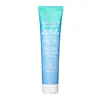What's inside
What's inside
 Key Ingredients
Key Ingredients

 Benefits
Benefits

 Concerns
Concerns

 Ingredients Side-by-side
Ingredients Side-by-side

Water
Skin ConditioningPropanediol
SolventHelianthus Annuus Seed Oil
EmollientCetyl Alcohol
EmollientCetearyl Olivate
Persea Gratissima Oil
Skin ConditioningSorbitan Olivate
EmulsifyingHydroxypinacolone Retinoate
Skin ConditioningOryza Sativa Bran Extract
Skin ConditioningRosmarinus Officinalis Leaf Extract
AntimicrobialChenopodium Quinoa Seed Extract
Skin ConditioningGanoderma Lucidum Extract
Skin ProtectingHelianthus Annuus Extract
EmollientMelatonin
AntioxidantTocopherol
AntioxidantGlycerin
HumectantJojoba Esters
EmollientBisabolol
MaskingCaprylic/Capric Triglyceride
MaskingMethylheptylglycerin
HumectantCitronellol
PerfumingGeraniol
PerfumingAcacia Senegal Gum
MaskingXanthan Gum
EmulsifyingSodium Gluconate
Skin ConditioningSodium Hyaluronate
HumectantDimethyl Isosorbide
SolventCaprylhydroxamic Acid
Caprylyl Glycol
EmollientCitric Acid
BufferingRose Extract
Skin ConditioningWater, Propanediol, Helianthus Annuus Seed Oil, Cetyl Alcohol, Cetearyl Olivate, Persea Gratissima Oil, Sorbitan Olivate, Hydroxypinacolone Retinoate, Oryza Sativa Bran Extract, Rosmarinus Officinalis Leaf Extract, Chenopodium Quinoa Seed Extract, Ganoderma Lucidum Extract, Helianthus Annuus Extract, Melatonin, Tocopherol, Glycerin, Jojoba Esters, Bisabolol, Caprylic/Capric Triglyceride, Methylheptylglycerin, Citronellol, Geraniol, Acacia Senegal Gum, Xanthan Gum, Sodium Gluconate, Sodium Hyaluronate, Dimethyl Isosorbide, Caprylhydroxamic Acid, Caprylyl Glycol, Citric Acid, Rose Extract
Water
Skin ConditioningGlycerin
HumectantStearic Acid
CleansingPetrolatum
EmollientPEG-100 Stearate
Glyceryl Stearate
EmollientGlycol Stearate
EmollientCaprylic/Capric Triglyceride
MaskingIsopropyl Palmitate
EmollientDimethicone
EmollientCoco-Caprylate/Caprate
EmollientPhenoxyethanol
PreservativeEthylhexylglycerin
Skin ConditioningCetyl Alcohol
EmollientSodium Hydroxide
BufferingTapioca Starch
Carbomer
Emulsion StabilisingDisodium EDTA
Stearamide Amp
Titanium Dioxide
Cosmetic ColorantStarch Hydroxypropyltrimonium Chloride
Emulsion StabilisingHydroxyethyl Urea
HumectantSodium Hyaluronate
HumectantCeramide NP
Skin ConditioningCeramide AP
Skin ConditioningCeramide EOP
Skin ConditioningPhytosphingosine
Skin ConditioningCholesterol
EmollientSodium Lauroyl Lactylate
EmulsifyingXanthan Gum
EmulsifyingSodium PCA
HumectantBetaine
HumectantSodium Lactate
BufferingGlutamic Acid
HumectantSerine
MaskingAlanine
MaskingGlycine
BufferingLysine
Skin ConditioningThreonine
Arginine
MaskingProline
Skin ConditioningWater, Glycerin, Stearic Acid, Petrolatum, PEG-100 Stearate, Glyceryl Stearate, Glycol Stearate, Caprylic/Capric Triglyceride, Isopropyl Palmitate, Dimethicone, Coco-Caprylate/Caprate, Phenoxyethanol, Ethylhexylglycerin, Cetyl Alcohol, Sodium Hydroxide, Tapioca Starch, Carbomer, Disodium EDTA, Stearamide Amp, Titanium Dioxide, Starch Hydroxypropyltrimonium Chloride, Hydroxyethyl Urea, Sodium Hyaluronate, Ceramide NP, Ceramide AP, Ceramide EOP, Phytosphingosine, Cholesterol, Sodium Lauroyl Lactylate, Xanthan Gum, Sodium PCA, Betaine, Sodium Lactate, Glutamic Acid, Serine, Alanine, Glycine, Lysine, Threonine, Arginine, Proline
Ingredients Explained
These ingredients are found in both products.
Ingredients higher up in an ingredient list are typically present in a larger amount.
This ingredient is an emollient, solvent, and texture enhancer. It is considered a skin-softener by helping the skin prevent moisture loss.
It helps thicken a product's formula and makes it easier to spread by dissolving clumping compounds.
Caprylic Triglyceride is made by combining glycerin with coconut oil, forming a clear liquid.
While there is an assumption Caprylic Triglyceride can clog pores due to it being derived from coconut oil, there is no research supporting this.
Learn more about Caprylic/Capric TriglycerideCetyl Alcohol is a fatty alcohol. Fatty Alcohols are most often used as an emollient or to thicken a product.
Its main roles are:
Though it has "alcohol" in the name, it is not related to denatured alcohol or ethyl alcohol.
The FDA allows products labeled "alcohol-free" to have fatty alcohols.
Learn more about Cetyl AlcoholGlycerin is already naturally found in your skin. It helps moisturize and protect your skin.
A study from 2016 found glycerin to be more effective as a humectant than AHAs and hyaluronic acid.
As a humectant, it helps the skin stay hydrated by pulling moisture to your skin. The low molecular weight of glycerin allows it to pull moisture into the deeper layers of your skin.
Hydrated skin improves your skin barrier; Your skin barrier helps protect against irritants and bacteria.
Glycerin has also been found to have antimicrobial and antiviral properties. Due to these properties, glycerin is often used in wound and burn treatments.
In cosmetics, glycerin is usually derived from plants such as soybean or palm. However, it can also be sourced from animals, such as tallow or animal fat.
This ingredient is organic, colorless, odorless, and non-toxic.
Glycerin is the name for this ingredient in American English. British English uses Glycerol/Glycerine.
Learn more about GlycerinSodium Hyaluronate is hyaluronic acid's salt form. It is commonly derived from the sodium salt of hyaluronic acid.
Like hyaluronic acid, it is great at holding water and acts as a humectant. This makes it a great skin hydrating ingredient.
Sodium Hyaluronate is naturally occurring in our bodies and is mostly found in eye fluid and joints.
These are some other common types of Hyaluronic Acid:
Learn more about Sodium HyaluronateWater. It's the most common cosmetic ingredient of all. You'll usually see it at the top of ingredient lists, meaning that it makes up the largest part of the product.
So why is it so popular? Water most often acts as a solvent - this means that it helps dissolve other ingredients into the formulation.
You'll also recognize water as that liquid we all need to stay alive. If you see this, drink a glass of water. Stay hydrated!
Learn more about WaterXanthan gum is used as a stabilizer and thickener within cosmetic products. It helps give products a sticky, thick feeling - preventing them from being too runny.
On the technical side of things, xanthan gum is a polysaccharide - a combination consisting of multiple sugar molecules bonded together.
Xanthan gum is a pretty common and great ingredient. It is a natural, non-toxic, non-irritating ingredient that is also commonly used in food products.
Learn more about Xanthan Gum